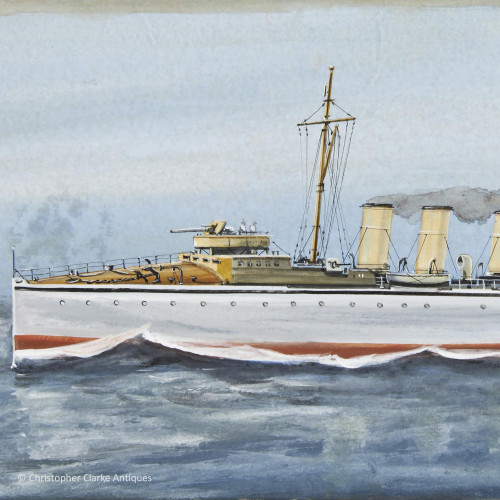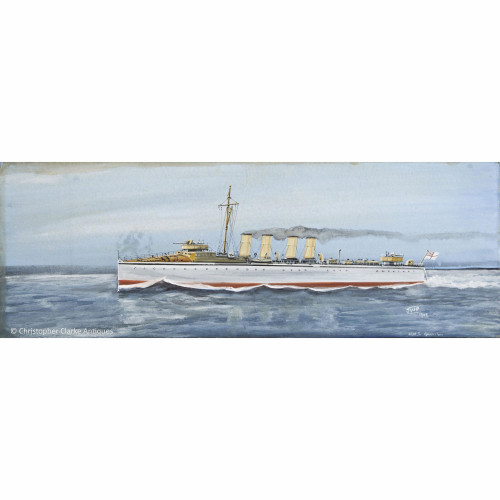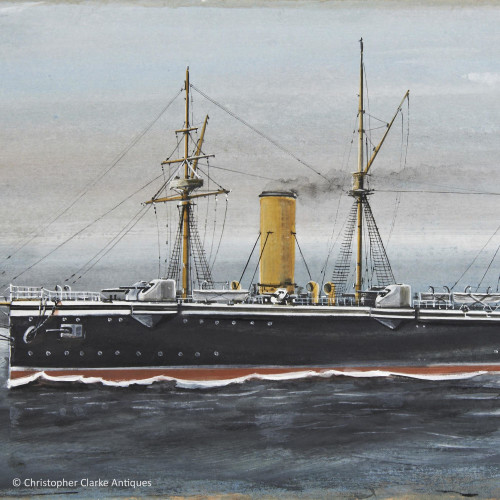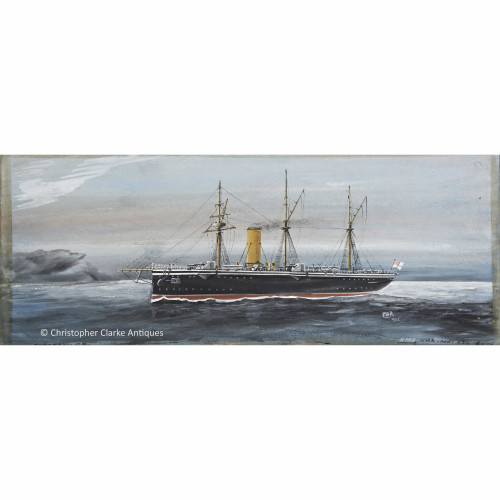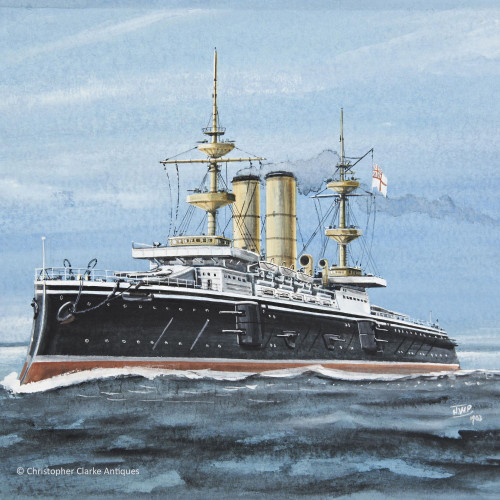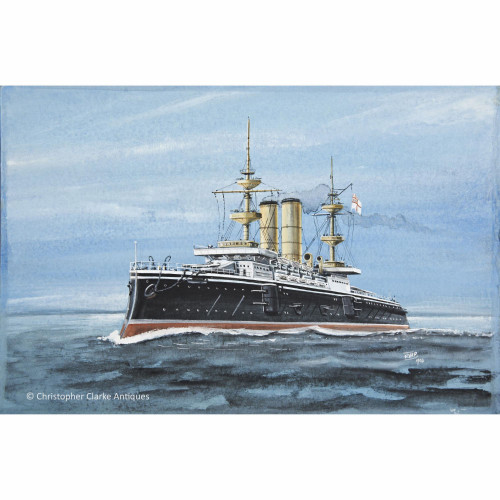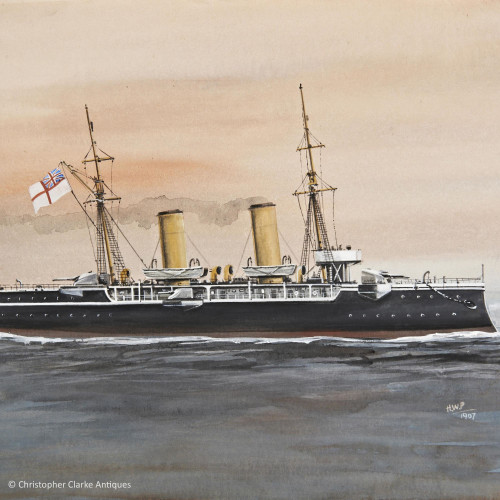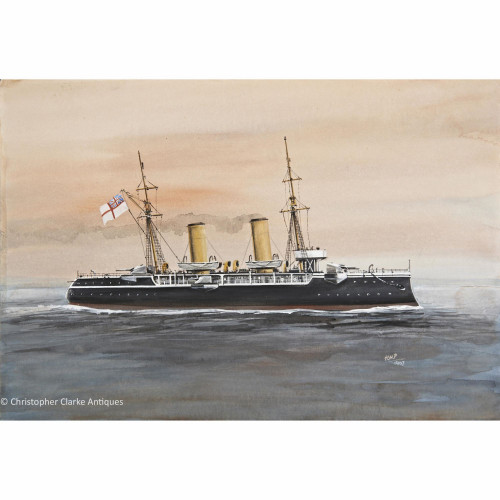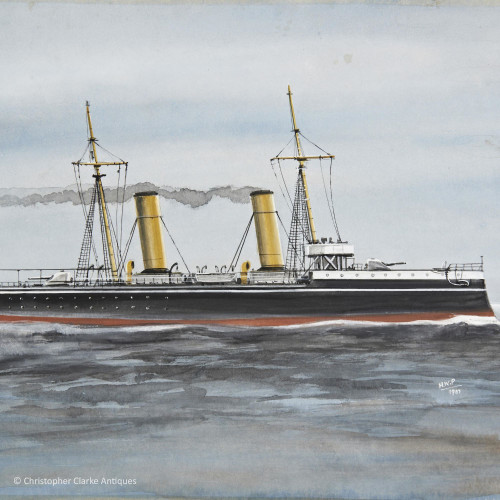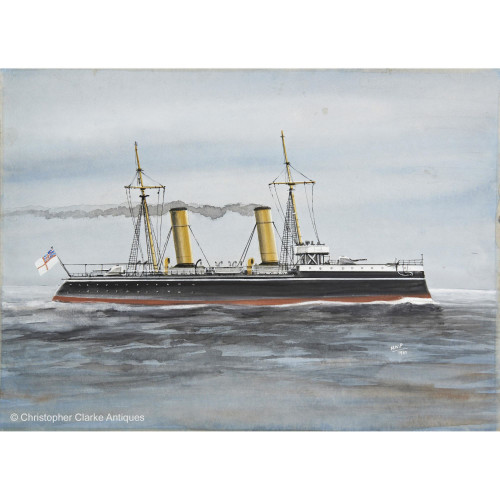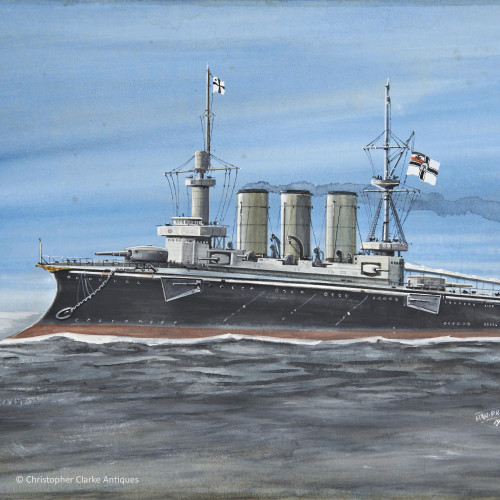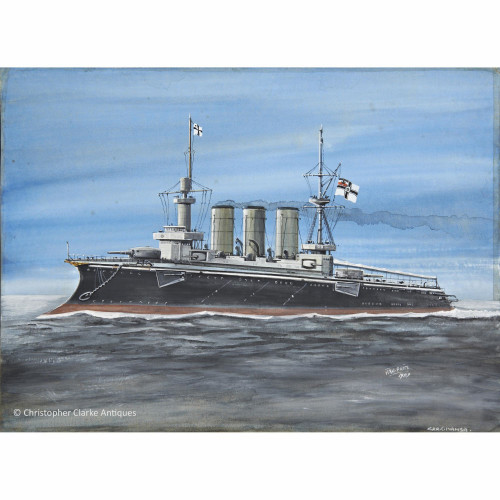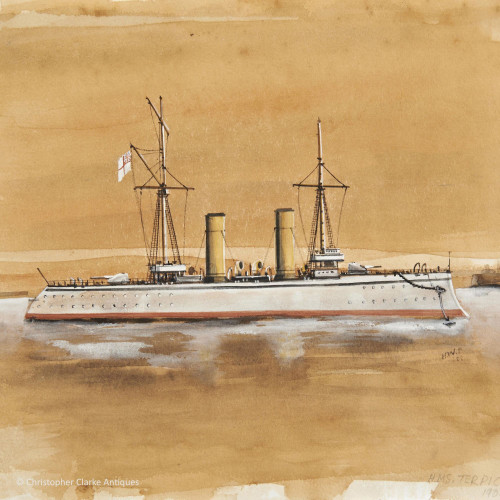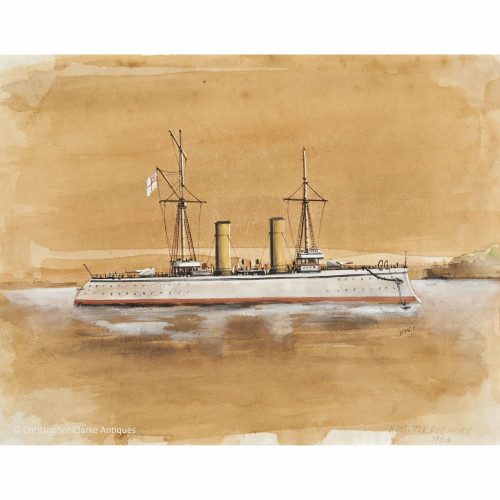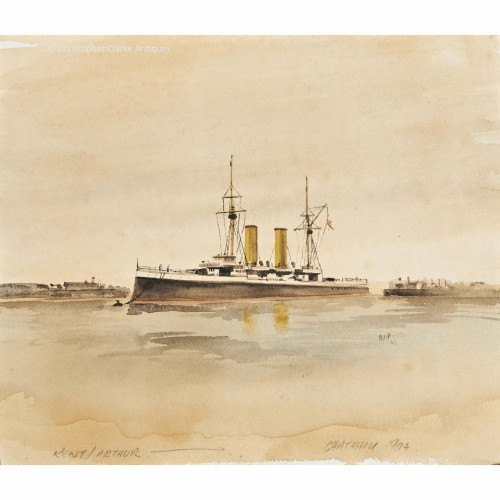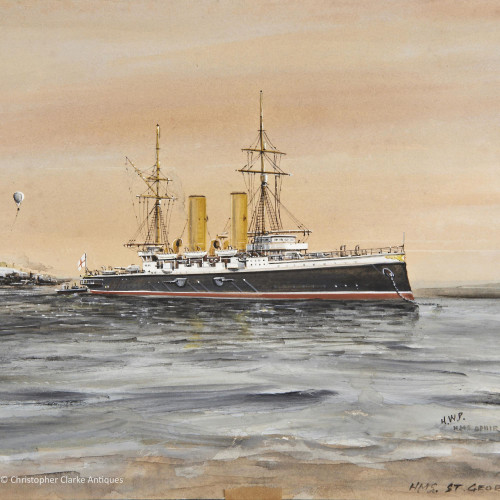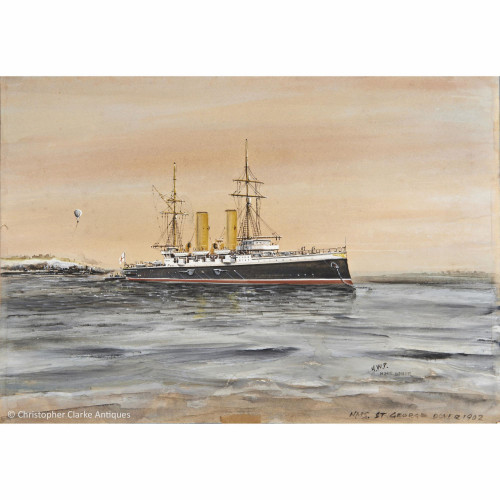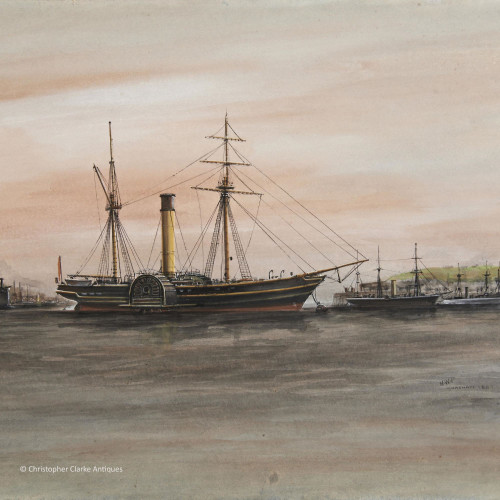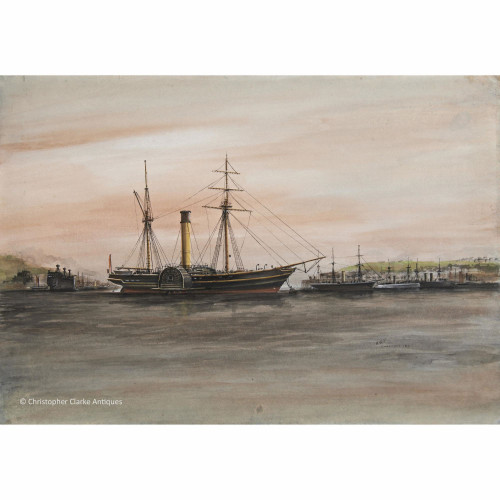Harry Price
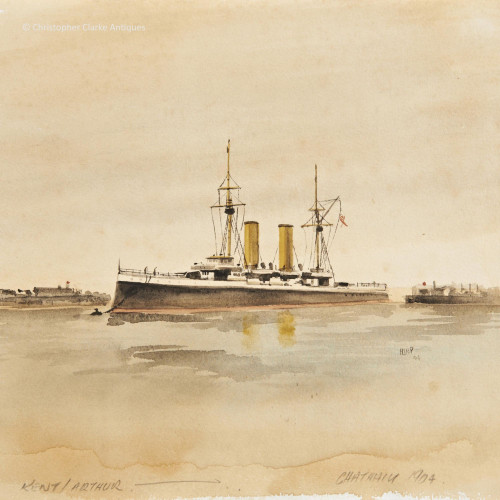
1875 - 1965
The artist Harry W. Price was born on the 6th of February 1877, in Birmingham. His Welsh parents had moved to the growing city presumably for work and his father became a master builder. Harry showed his talent as an artist from an early age with his teacher recommending him to the Birmingham School of Art. He worked his way through the classes in a matter of weeks after which he left as the school felt that they couldn't offer him anything more.
In July 1893, at the age of 16 he joined the Royal Navy and when 18 signed up for 12 years. He had left the industrial city of Birmingham for Devonport and the training base of HMS Impregnable. Devon suited Harry and he took to walking the countryside in his spare time, fishing and painting as he went. He came from a family of good anglers and both walking and fishing were a constant in his life. On one of his walks he discovered the village of Drewsteignton and it left a lasting impression on him. So much so that he eventually returned to live there.
He progressed through the lower ranks from Boy to Ordinary Seaman, Able Seaman and Leading Seaman before reaching Petty Officer in January 1901. His good behaviour led to his service on HMSY Ophir for the Duke and Duchess of Cornwall and York's 8 month Royal Tour of the Empire from February to November 1901. He continued to paint whilst in the navy
The artist Harry W. Price was born on the 6th of February 1877, in Birmingham. His Welsh parents had moved to the growing city presumably for work and his father became a master builder. Harry showed his talent as an artist from an early age with his teacher recommending him to the Birmingham School of Art. He worked his way through the classes in a matter of weeks after which he left as the school felt that they couldn't offer him anything more.
In July 1893, at the age of 16 he joined the Royal Navy and when 18 signed up for 12 years. He had left the industrial city of Birmingham for Devonport and the training base of HMS Impregnable. Devon suited Harry and he took to walking the countryside in his spare time, fishing and painting as he went. He came from a family of good anglers and both walking and fishing were a constant in his life. On one of his walks he discovered the village of Drewsteignton and it left a lasting impression on him. So much so that he eventually returned to live there.
He progressed through the lower ranks from Boy to Ordinary Seaman, Able Seaman and Leading Seaman before reaching Petty Officer in January 1901. His good behaviour led to his service on HMSY Ophir for the Duke and Duchess of Cornwall and York's 8 month Royal Tour of the Empire from February to November 1901. He continued to paint whilst in the navy
and he illustrated his diary of the tour. He went onto to later paint many of the ships illustrated in his diary. Harry's son Jack published the diary in 1980 and it shows his father's skill as an artist, his sense of humour and adventure as he details some of the walks he took on the tour.
From 1904 onwards, Harry Price's discipline seems to have fluctuated as he went down from Petty Officer to Leading Seaman and then Able Seaman. His service finished in 1907 and he joined the Royal Fleet Reserve to keep his ties with the Navy. He continued to travel the world before returning to Devon. He re-enrolled to serve in the First World War and was unlucky enough to be on 3 ships that were sunk in a 9 month period. He was awarded the DSO, survived the War and was demobilised in March 1919.
In 1915, Harry married Edith Ashplant from Drewsteignton, the Devon village he had always wanted to make his home. Being the only camera owner in the village, Harry photographed his own wedding. Their son Jack was born in 1919. Harry and Edith took over Fingle Bridge Inn from her parents but he continued to paint. It is likely that he supplied work for various publications. A humorous postcard of a sailor fast asleep in his hammock entitled 'The Abode Of Rest Or Jack's The Boy For Work' for Abrahams & Sons of Devonport is known. A number of his paintings look as if they were made for publication or for use by the navy. He also developed an interest in naturalism which aligned with his love of walking. Collecting butterflies and bird's eggs led to being a freelance supplier to Watkins and Doncaster and on to bird photography with Richard Kearton.
Harry Price signed his work in a number of ways. Often he used just his initials H.W.P sometimes with a line above and below, sometimes not. It seems he also used the initials J.W.P. although it is not known why. The painting of the German ship Hansa is signed H.W. Price with a line both above and below his name. The above-mentioned postcard is signed Harry Price.
Price was a talented artist although his reputation and name is not as widely known as many other illustrators of his time such as Norman Wilkinson and Norman Arnold.
10 ITEMS

